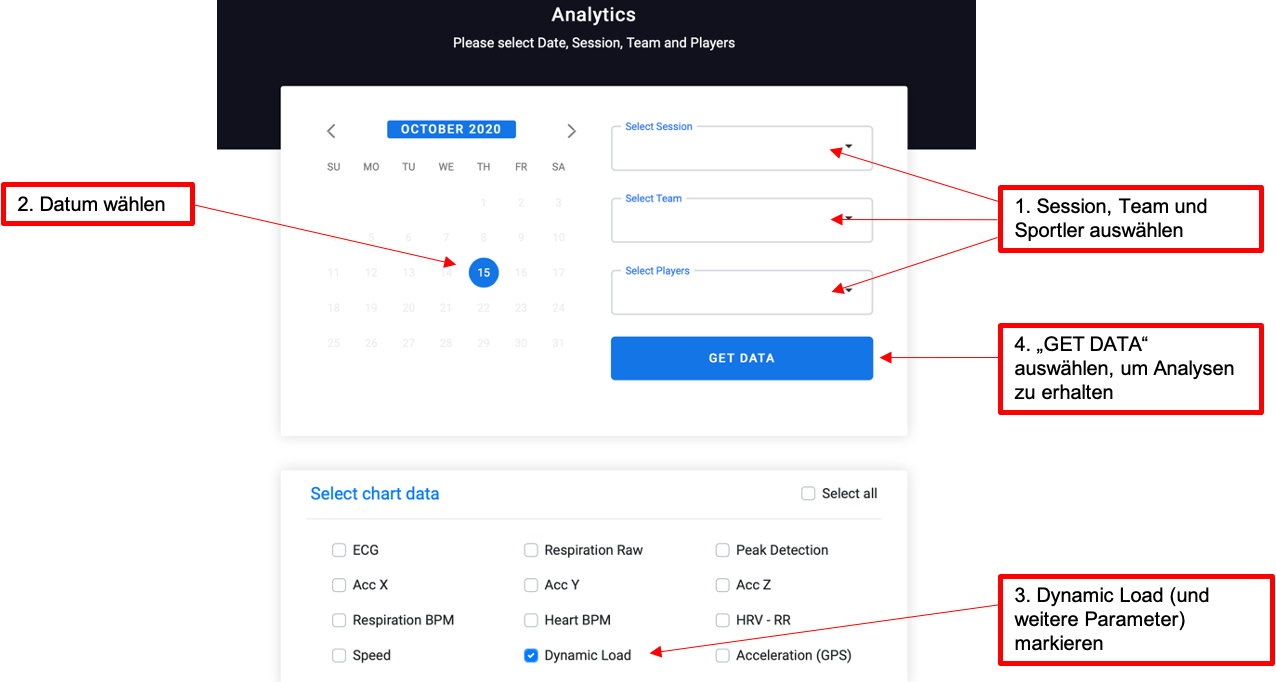What is the Dynamic Load?
The Dynamic Load results from the sum of all accelerations in each of the three axis directions (acceleration in the x, y and z directions) at a given point in time.
Measured via the implemented accelerometers, the dynamic load is divided into preset zones. To obtain the Total Dynamic Load for each zone, the Dynamic Load values are summed within the zones. If you add them up, you get the total dynamic load of a training session or a match.
How to use Dynamic Load?
The more often the athlete is in one of the higher areas of dynamic load, the more agile and faster his movements are.
For the training control, dynamic load is an important indicator of muscular load. Because the Dynamic Load describes in the broadest sense the work that an athlete has done during a training session or a match. The session is random and unscaled [au], in other words it is only used as a factor for comparison.
The analysis of the dynamic load has advantages over the analysis of the distance traveled in that the dynamic load also includes non-running activities, such as tackling. For pure runners, there will of course be a strong correlation between the measured distance covered and the dynamic load.
Setup
In order to be able to use the parameter optimally for training control, Dynamic Load zones should be selected in advance. The zones in the picture are defined as the standard for game sports and are recommended for successful analysis:

However, the zones can also be selected independently and individually. As a result, the evaluations also change.
Analytics

Parameter Definition
- Dynamic Load [au]
Types of the parameter
- Total Dynamic Load [au]
- Dynamic Load per minute [au/min]
- Zone 1 Dynamic Load (Total Dynamic Load per Zone) [au]
- Zone 1 % Total Dynamic Load (Percentage of Total Dynamic Load per Zone at Total Dynamic Load) [%]


Comment
0 Comment
Please a sign in to leave a comment.